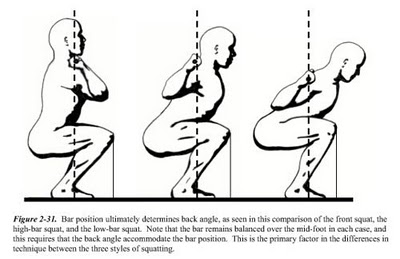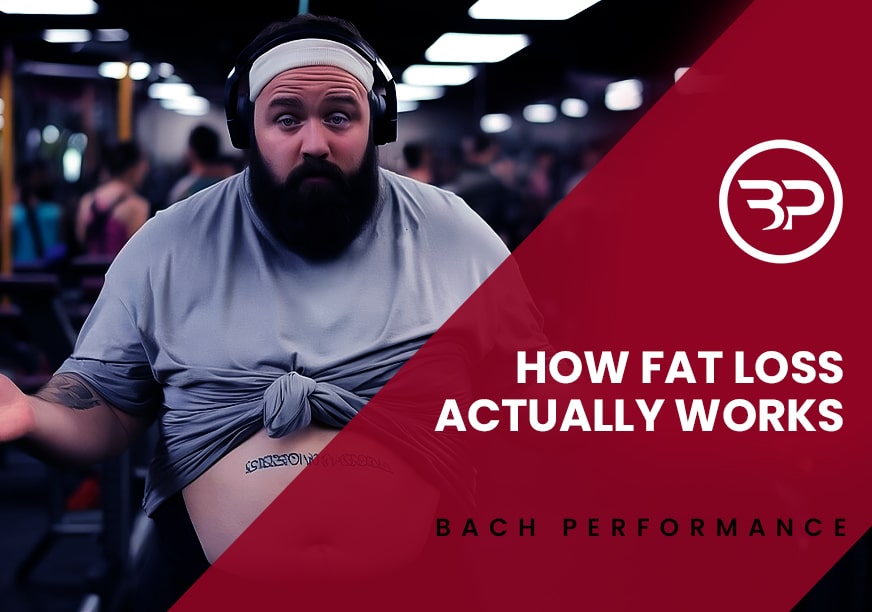High Performance Exercises You Should be Doing: Goblet Squat
November 18, 2014
The Goblet squat, often dubbed the “goblin squat” by my clients is one of the best exercises you can do to build stronger legs without beating up your spine.
The goblet squat is a movement most everyone (injuries non-withstanding) should do. Still, all I see are barbell squats and front squats, often with hips shooting up early, poor depth, and varus/valgus issues at the knee. Despite being a natural movement squatting with sound technique has somehow become a lost art.
Despite being a natural movement squatting with sound technique has somehow become a lost art.
Between sedentary jobs and inactive lifestyles, basic movement quality sucks for most folks. Among most exercises what’s supposed to be a squat ends up looking like a quasi-modo twerking with a steel bar on his back.
As you’d imagine, it ain’t pretty. Squats are a great tool, but like anything else, how you use the tool is most important. A hammer is great when hitting a nail, as long as you strike the nail instead of exploding your thumb. The same with squat variations.
As it is, the goblet squat is my preferred exercise when introducing the squat to new clients and beginners in the weight room.
If you’re coming back from an injury or you’re looking for a high rep finisher, goblet squats can be a perfect addition to your training.
Goblet Squat Progression
Start with a bodyweight squat with the arms at shoulder width, progressing to an overhead squat to see how thoracic mobility limitations are playing a role in limiting movement.
At this point, most people’s knees begin shaking, their heels leave the floor, and all hell breaks loose. More than common mobility restrictions like poor dorsiflexion or tight hips my concern lies with the lack of stability during the movement. The fact that so many folks run around playing sports with major instabilities sets off the alarms faster than deadlifts at Planet Fitness.
With this in mind, the last thing you want to do is hop under a heavy barbell and squat your face off until your form is rock-solid. This is where the almighty goblet squat comes into play.
Here’s a quick demo from my YouTube Page, which you should probably subscribe to.
Goblet Squats for Muscle Building:
Few exercises stimulate total body muscle growth like squats.
Problem is, most people suck at them. Piling volume-on-top of dysfunction is a huge no-no, and squats are a frequent perpetrator. You won’t be able to load goblet squats heavy like barbell squats, but you maintain great form and not snap your spine in half during longer duration sets.
This means you won’t be able to go as heavy. But you can create tons of metabolic stress and muscular damage to trigger muscle growth.
Sound like a win? It is, especially for your joints.
Aim for 3-5 sets of 10-20 rep goblet squats at the end of your lower body training.
Use a 3-4 second eccentric (negative, or the way down) and mentally engage your quads through every single rep. For an added bonus, try heels elevated goblet squats by putting a small weight plate under your heels to hammer your quadriceps.If you work your way up to the biggest dumbbells in your gym you’ll build big wheels in no time.
What Does a goblet squat work?
A goblet squat works all the muscles of a regular squat. Your glutes, quads, hamstrings, calves, adductors/abductors (groin), anterior core, lower back, biceps, forearms, and upper back
Goblet Squat Benefits: Teach Squat Technique
I’ve beaten a dead horse on this point, but I’ll do it one more time: Squats are a great exercise if you can do them correctly. Unforuntalye, most people can’t. So instead of force-feeding an exercise that may lead to injuries, the goblet squat is the perfect regression to optimize technique while building muscle.
Since the compact weight is held in front of you, it’s much easier to stabilize than a long, unstable barbell. Your anterior core/abs will get hit hard as will your thoracic extenders, aka your upper back. Altogether, the goblet squat is a great muscle-building, posture-improving exercise with almost no risk of injury even if you’re just getting started.
Increase anterior core engagement:
I cover this thoroughly when talking about front squats here, and the mechanism responsible for strengthening your core with goblet squats and front squats is largely the same.
Anterior bar placement keeps the torso vertical, preventing the hips from going into an excessive tilt, and requiring greater oblique and rectus abdominus involvement to prevent flexion.
This means your spine stays more vertical, lengthens the lats, reduces shear stress on the spine, and requires extra core involvement to keep you vertical. In a nutshell, proper front squats and goblet squats protect your back from shooting a disk across the room and sending you to the ER.
Vertical Spine position and less shear stress on the spine:
Per the increase in anterior core engagement, the spine stays vertical, lengthens the lats, reduces shear stress on the spine. Altogether, this requires extra core involvement to keep you upright. During de-load periods heavy goblet squats as opposed to back squats deload the spine and nervous system.
Minimal Equipment or Space Needed:
If you’re traveling or don’t have any room to squat because some hair-gelled douche is curling in the squat rack then goblet squats are an awesome substitution to hammer your legs. In all seriousness, exercise doesn’t need to be complicated, it just has to be effective. Find out more on Exercise Minimalism in my three-part series here, here, and here.
Teach upper-back tightness during lower body exercises:
Manye lifters don’t realize the importance of keeping the upper back tight because they don’t lift enough weight to get stapled forward. As you get stronger your weak points will be exposed. Goblet squats are crucial because they teach the upper-back tightness you’ll need to lift heavier with a barbell over time.
With even moderate weights, the goblet squatter feels his upper back and must retract the shoulders to hold the ideal position.
Teach tightness in the hole without significant loading:
Lots of folks lose lumbar stability in the bottom of the squat, bounce out of the hole, and losing spinal integrity. If you feel yourself rounding forward when you squat or your hips shooting up before your chest, this could be you.
Not. Good.
To learn tightness and technique in the bottom of a squat, goblet squats with a pause are perfect. The anterior load forces anterior core engagement and abdominal bracing when the lower back is most prone to injury– the bottom of a squat. Adding a pause allows time to check the alignment of your hips, knees, and ankles to prevent pronation/supination of the foot and valgus/varus stress on your knees.
In other words, adding pauses and slow tempo to reinforce your technique keeps your body from breaking down into potentially injury-causing positions.
How to Goblet Squat:
Hold a dumbbell (or kettlebell) with both hands underneath the “bell” at chest level, and set your feet shoulder-width apart with your toes pointing slightly outwards
(a). Push your butt back like you’re sitting in a chair and descend until your elbows reach the inside of your knees.
(b). Keeping your heels flat, pressing into the floor, pause at the bottom of the squat, and return to a full standing position. If your heels rise push your hips further back and work on partial ranges of motion until mobility and form improve
(c). Repeat for three to four sets of 8-10 reps.
Goblet Squat Coaching Cues:
Keep your chest tall with your shoulders squeezed down and together.
Brace the trunk like you’re taking a punch rather than arching your lower back.
Sit between your legs and open your hips. Push your knees out while you’re at it.
Descend to your deepest depth without losing lumbar integrity (a.k.a. buttwink. Which is not about the Hamstrings, a must read by Dean Somerset)
Reverse directions, driving your feet evenly into the ground and returning to a tall standing position. Squeeze the glutes at the top, rinse, and repeat.
Sample Goblet Squat Progression:
The bodyweight squat and overhead squat are two tests used for assessments for good reason: they show coordination and movement in a basic movement pattern.
I prefer this progression as it reinforces movement quality in a limited range of motion (ROM) and gradually increases ROM and difficulty as you get stronger.
Bodyweight Squats to Box>Bodyweight Squats with Pause> Goblet Squat to High Box>Goblet Squat to Lower Box>Goblet Squat with Pause>Goblet Squat
From here, you can take your goblet squat to a front squat or back squat with a more refined movement pattern and better total-body stability for pain-free progress.
The Goblet Squat Challenge
Think you’re too advanced to use goblet squats effectively? Ahh, it’s time to be humbled my friend.
As covered in my work on T-Nation, the goblet squat challenge is as follows: ”
When loaded heavy, the goblet squat is a brutal exercise that challenges the strength of your legs, anterior core, and upper back. Add in an iso-hold on the front end and you have a battle for the ages.
The Challenge
- Grab a dumbbell or kettlebell. Between 40-80 pounds is plenty for seasoned lifters.
- Hold it at chest height and descend to the bottom position of the squat. Hold in the bottom position for 15 seconds.
- After 15 seconds, stand up to full extension then perform as many full goblet squats as possible, up to 15 reps. If you can bang out more than that, go heavier.
Start with 40 pounds until you complete the full iso-hold plus 15 reps, at which point you increase the weight by 5-10 pound increments in subsequent workouts.”
In my experience, most men should start with 65 pounds and progress from there. Women will do well with 40 as a starting point. Work your way all the way to 100+ if you can and #gobletsquatchallenge and tagging @bachperformance on Instagram. Here’s a quick demo:
Wrap Up
By now you’re well versed in the goblet squat. The goblet squat is a great teaching tool for beginners, a slam dunk for improving your technique, and a deceptive tool for building bigger, stronger legs.
Yea, it’s not ideal for maximum strength and power development, but let’s be real—more trainees would benefit from building sound mechanics of a goblet squat before piling weight on a faulty foundation and getting hurt.
Whether you’re new to squats or can’t squat due to hair-gelled curl in the squat rack guy the goblet squat is a high-performance training tool you should be doing.










[…] there’s a reason this exercise is one of the high-performance exercises that will […]
I like the efforts you have put in this, thank you for all
the great posts.
Great stuff, Eric…
Would you consider adding other high performance exercises people should be doing. My previous trainer would have me do goblets from time to time. I’m passing this on to my trainer (whose name is also Eric) to add to my training regimen.
Awesome Awesome – so key information and really well put together – your a master
Thank You
[…] P.S. For a more advanced option, try the goblet squat. […]